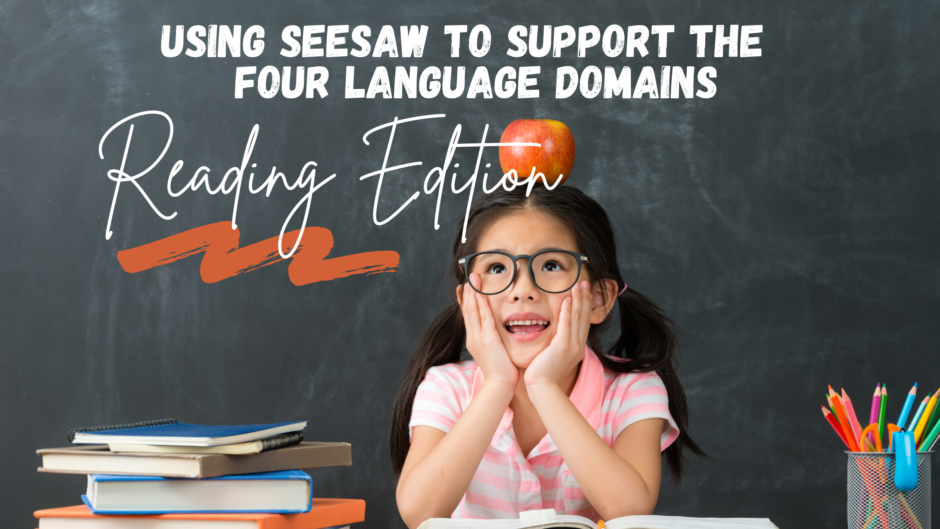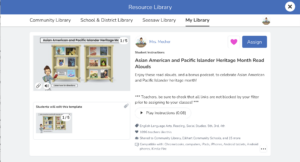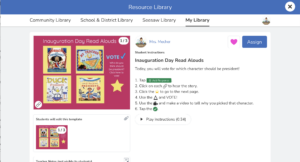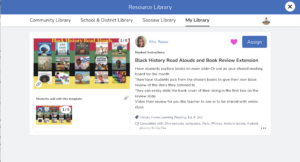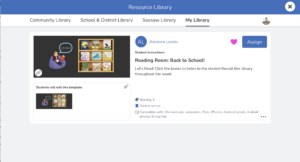The language domains, listening, speaking, reading, and writing, are the 4 ways that people can interact with language. Two of these skills, speaking and writing, are described as productive skills as we create language with each of these. The other two skills, listening and reading, are receptive skills because we use these skills to receive information from an outside source.
In this post, we will focus on ways that you can practice the language domain of reading by using Seesaw.
Teaching Reading
When we talk about reading, we are referring to students actively making meaning from written input. While reading, students are performing many tasks. They are getting clues from the text by considering the layout, headings, and illustrations. They are also using their background knowledge to make inferences and predictions all while decoding letters to understand words and interpreting the meaning of words. Considering all that we are asking students to do, it’s no surprise that reading can be a struggle for many students.
In order to meet all these needs, according to TESOL Teachers, an effective reading lesson includes the following:
- Has pre-reading activities to prepare and motivate students to use their background knowledge, anticipate what they will read, and decide on a reading strategy.
- Helps students practice reading skills.
- Helps them learn new vocabulary and information in the L2.
- Uses appropriate material that is of value to the students, is at the right level, and is authentic (when possible).
- Gives students reading tasks, which can include one or more of the following:
- To get general information;
- To get specific information;
- To accomplish a task.
- Requires some kind of response like taking notes, answering Qs, and making a decision.
- Gives students an opportunity and reason to read the text more than once.
- There are follow-up activities that include the other skills.
Woah, that’s a lot. To help ease this large load, consider using Seesaw to enhance your lesson.
How can we practice Reading with Seesaw?
Seesaw can help your students practice their reading skills using a few different features.
Uploading Passages
Upload images of your own passages with the add photo option. When adding text, remember to add audio in chunks so students that need the added audio support have that available to them.
Pre-reading skills are still necessary when including digital text. Consider pre-teaching the vocabulary on the slide prior to the passage so students have exposure prior to reading.

To upload your own passage, select the camera icon > tap upload > select the file you need to upload. For more help, visit the Seesaw Help Center.
Repeated Oral Reading
Practicing oral reading can help students improve word recognition, speed, and accuracy, along with improving their fluency. In order to be most effective, researchers have found that having students read and re-read a text four times is sufficient for improved performance. It is also important to know that students should be orally reading text that is at their independent level, and not at an instructional or frustration level. Independent levels should be relatively easy for students to read with 95% word accuracy.
Considering having students work on one passage a week, recording themselves reading the passage at different times throughout the week. The teacher could send it back after each reading and return the assignment as a “draft”. This allows the student to receive feedback, while also continuing to work on the assignment. Consider an assignment like the one below; find it on Seesaw, here.
Links to Websites
Consider adding links to websites for students to explore, with questions on Seesaw for students to find answers for.
Here is an example of a web quest on Seesaw that requires students to explore various resources, then come back and complete an assignment with that information.
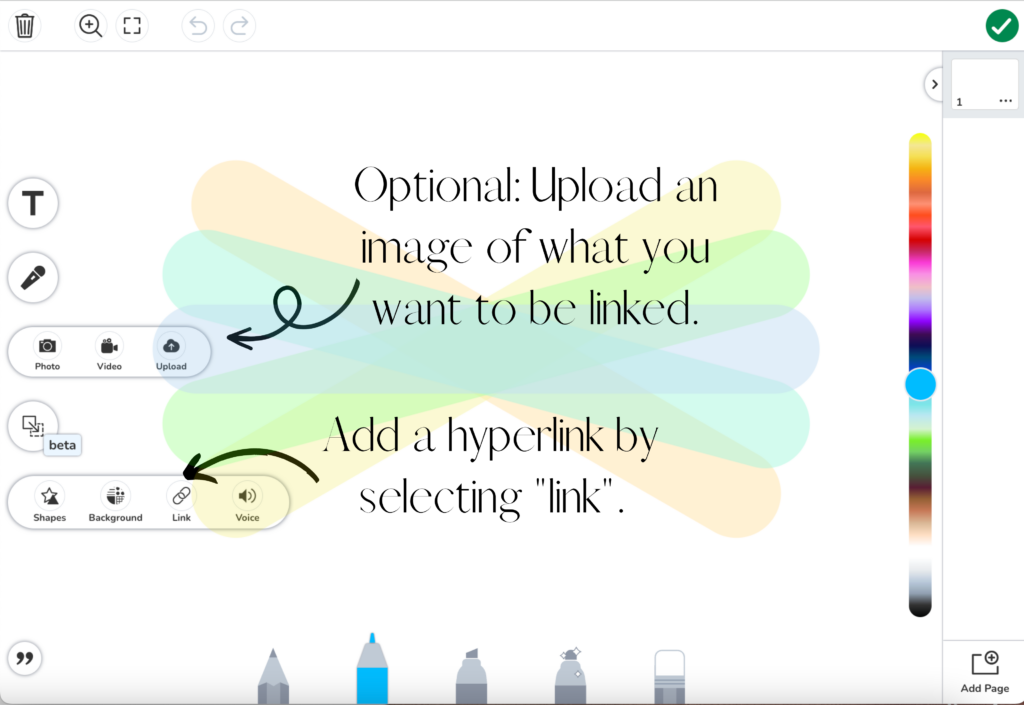
To add a link to a text box, shape, or image, select the item > tap the […] button on the item > select link > paste the video link. For more help, visit the Seesaw Help Center.
Create a Read Aloud Board
Don’t ever be too caught up in teaching reading, that you forget we also want kids to love to read. Create a read-aloud choice board for students to engage with text for enjoyment. Use the “Link to Websites” to add direct links to Read Alouds on YouTube.
How can we differentiate reading with Seesaw?
Seesaw is an amazing resource to use when adapting or modifying text to meet the needs of all learners. Creating modified assignments with Seesaw can be done very quickly. My suggestion is to create your assignment with the highest level of accommodations/modifications. Then you can easily copy and edit the assignment to remove any unnecessary accommodations/modifications for the next group of students.
For example, if I were sharing a reading assignment with students, I might consider including audio, translated text, and a word bank for fill-in-the-blank questions. After assigning this assignment to a group of students with the highest needs, I would copy and edit the assignment to remove the word bank and instead include sentence stems for open-ended questions. I would copy and edit this assignment once more to remove the sentence stems and the translations for my English-speaking students. I kept the audio as this is something that all students could benefit from. By removing/altering modifications on assignments, I am offering my students the right level of rigor and removing things that may be distracting, like translations for English-speaking students.
How much support do my students need?
When considering the amount of support students need to feel successful, know that all students are at a different place in their reading journey. The first important thing to consider is their reading proficiency level. At Elkhart Community Schools, you can access this through PowerSchool by looking at each student’s ILP.
Once you know your students’ proficiency levels for reading, take a look at the WIDA Can Do Descriptors. These descriptors help you to gauge the level of support your student needs to be successful.
Consider using Seesaw’s grouping feature to add students into groups based on their speaking proficiency.
